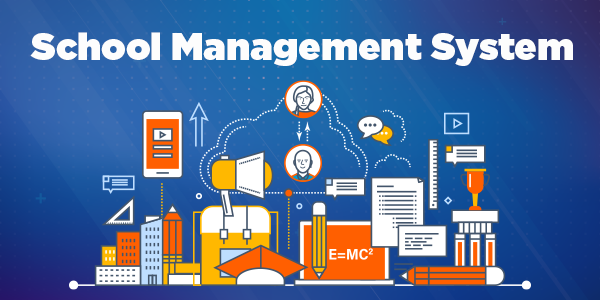Revolutionizing Education: A Comprehensive Overview of School Management Systems
Introduction:
In the fast-paced world of
education, efficient and organized administrative processes are essential for
the smooth functioning of educational institutions. School
Management Systems (SMS) have emerged as a ground breaking solution,
revolutionizing the way schools handle various administrative tasks. This
comprehensive overview delves into the key components, benefits, challenges,
and future prospects of School Management Systems.
I. Definition and Components of
School Management Systems:
A School
Management System (SMS) is a robust software application designed to
streamline and automate various administrative and academic processes within
educational institutions. Its primary goal is to enhance efficiency, reduce
paperwork, and provide a centralized platform for managing diverse school
activities. The core components of an SMS typically include:
1. Student Information System (SIS):
Manages student data, including personal details, academic records, attendance,
and disciplinary history.
2. Attendance Management: Automates
the attendance tracking process, minimizing errors and allowing quick analysis
of attendance patterns.
3. Gradebook and Exam Management:
Facilitates the creation and management of exams, as well as the recording and
analysis of students' grades.
4. Timetable Management: Generates
and manages class schedules, ensuring optimal utilization of resources and
avoiding conflicts.
5. Communication and Collaboration:
Provides a platform for effective communication between teachers, students,
parents, and administrators.
6. Library Management: Automates
library functions, including book cataloging, circulation, and inventory
management.
7. Financial Management: Handles
financial transactions, including fee collection, budgeting, and expense
tracking.
 |
| School Management System |
II. Benefits of School Management Systems:
Implementing a School Management
System yields numerous advantages, impacting various stakeholders within the
educational ecosystem:
1. Efficiency and Time-Saving:
o
Automates
routine administrative tasks, allowing staff to focus on more value-added
activities.
o
Reduces
manual paperwork, leading to a more efficient and streamlined workflow.
2. Improved Communication:
o
Enhances
communication between teachers, students, and parents through centralized
platforms, reducing information gaps.
o
Provides
real-time updates on academic progress, attendance, and other relevant
information.
3. Data Accuracy and Security:
o
Ensures
accurate and up-to-date information through centralized data storage.
o
Implements
robust security measures to protect sensitive student and school data.
4. Resource Optimization:
o
Optimizes
the allocation of resources, including classrooms, teachers, and other
facilities, by creating efficient timetables.
o
Facilitates
better planning and utilization of educational resources.
5. Enhanced Parental Involvement:
o
Provides
parents with real-time access to their child's academic progress, attendance,
and other relevant information.
o
Facilitates
parent-teacher communication, fostering a collaborative approach to a student's
education.
6. Data Analytics for
Decision-Making:
o
Offers
insightful data analytics to administrators, enabling informed decision-making.
o
Helps
identify trends, areas for improvement, and student performance patterns.
III. Challenges in Implementing
School Management Systems:
While the benefits of School
Management Systems are significant, their implementation is not without
challenges:
1. Resistance to Change:
o
Resistance
from staff and faculty accustomed to traditional methods can impede the
successful adoption of SMS.
2. Financial Constraints:
o
Some
educational institutions may face budgetary constraints in acquiring and
implementing a comprehensive SMS.
3. Training and Skill Gaps:
o
Proper
training is crucial for the successful implementation of SMS, and staff may
face challenges adapting to new technologies.
4. Integration with Existing
Systems:
o
Integrating
SMS with existing systems, such as legacy software, can pose technical
challenges and require careful planning.
5. Data Migration and Security
Concerns:
o
Migrating
data from old systems to the new SMS can be complex, and ensuring data security
during the process is critical.
IV. Future Trends and Innovations
in School Management Systems:
As technology continues to
evolve, School Management Systems are poised to undergo further advancements:
1. Artificial Intelligence (AI)
Integration:
o
AI-powered
features, such as predictive analytics for student performance, can enhance
decision-making processes.
2. Mobile Accessibility:
o
Increasing
emphasis on mobile-friendly interfaces, allowing stakeholders to access
information on the go.
3. Blockchain for Data Security:
o
Utilizing
blockchain technology to enhance the security and transparency of student and
school data.
4. Customization and Scalability:
o
Offering
customizable features to cater to the unique needs of different educational
institutions.
o
Ensuring
scalability to accommodate the growth and changing requirements of schools.
5. Integration with Learning
Management Systems (LMS):
o
Seamless
integration with LMS for a holistic approach to managing both administrative
and academic aspects.
Conclusion:
In conclusion, School Management
Systems play a pivotal role in transforming the landscape of educational
administration. The benefits they bring, from increased efficiency to improved
communication and data-driven decision-making, make them an indispensable tool
for modern schools. While challenges exist in their implementation, the
continuous evolution of technology offers promising trends for the future of
School Management Systems. As educational institutions strive to adapt and
embrace these innovations, the journey towards a more efficient and effective
education system unfolds.

Comments
Post a Comment